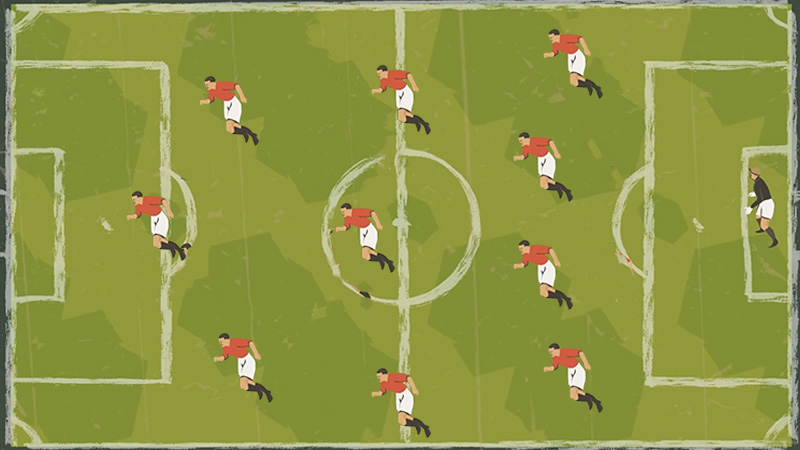Soccer, known as the beautiful game, captivates millions of fans worldwide with its electrifying moments and skillful displays. Behind every successful team, there lies a well-defined system of player positions, each contributing uniquely to the team’s overall strategy.
Whether you’re a seasoned soccer enthusiast or a newcomer to the sport, understanding the various player positions is essential to appreciating the tactical intricacies that unfold on the pitch.
In this comprehensive guide, we delve into the diverse roles that players assume on the soccer field. From the relentless wingers tearing up the flanks to the clinical strikers delivering breathtaking goals, each position plays a pivotal role in shaping the outcome of the match.
The List of the Soccers Player Position
As we all know, there are initially 11 players in a team of Soccer. The positions are briefly described below.
Goalkeeper
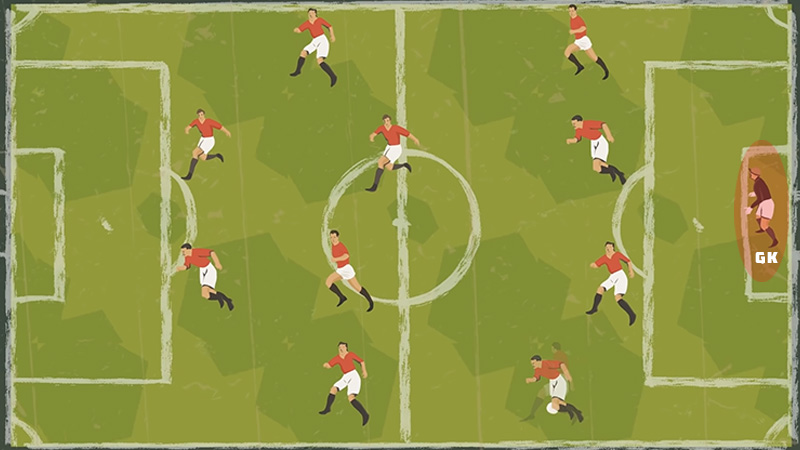
The goalkeeper is the last line of defense in soccer. Positioned in front of the goal, their primary objective is to prevent the opposing team from scoring by stopping shots and crosses.
They wear distinct gloves to enhance their ability to catch and deflect the ball. Goalkeepers must have excellent reflexes, agility, and great spatial awareness to anticipate opponents’ moves.
They also act as on-field leaders, organizing the defense and communicating with their teammates to maintain shape and counter-attacks.
Goalkeepers are often crucial in high-pressure situations, making crucial saves that can change the outcome of a match. Their distribution skills are becoming increasingly important, as they initiate attacking plays by distributing the ball accurately to their teammates.
Right-back
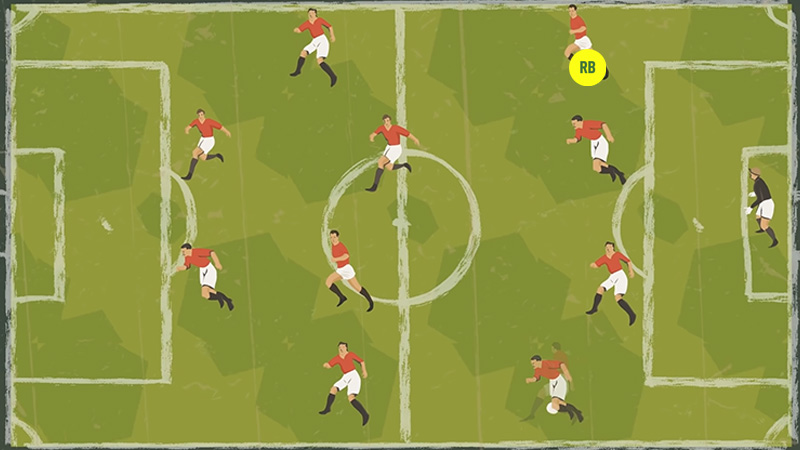
The right-back plays on the defensive line and is positioned on the right side of the field. They must be skilled in both defensive and attacking roles. Defensively, they aim to prevent wingers and opposing attackers from advancing on the right flank.
They must possess good tackling, marking, and interception abilities. Offensively, they support the attack by overlapping with midfielders and wingers, providing width to the team’s play.
Right-backs often contribute with crosses into the penalty area, making them an additional attacking threat. Modern right-backs are also required to have stamina and speed, as they are involved in both defense and offense throughout the game.
Left-back
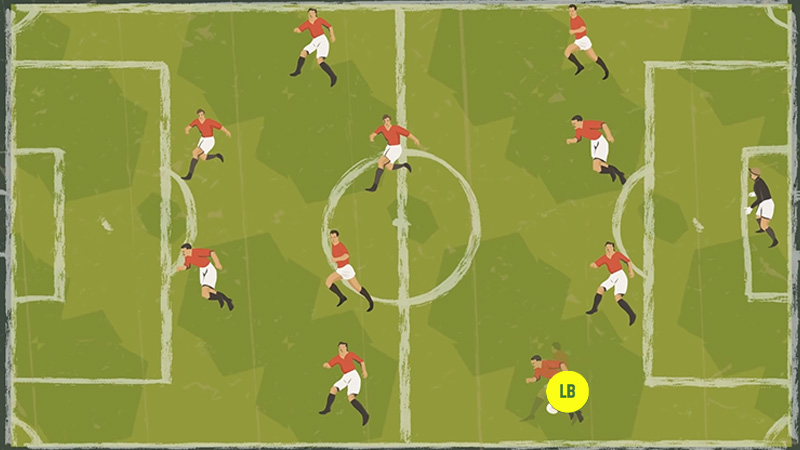
Similar to the right back, the left back is positioned on the defensive line but operates on the left side of the field. Their role involves defensive duties, such as stopping wingers and attackers on the left flank.
They must possess strong defensive skills, including tackling, intercepting, and positioning. Offensively, they contribute by overlapping with the left-sided midfielders and wingers, offering width and creating crossing opportunities.
Left-backs are often expected to be good at passing and delivering accurate crosses into the box. Their versatility is crucial as they need to support the attack while being mindful of defensive responsibilities.
Center-back (or Central Defender)
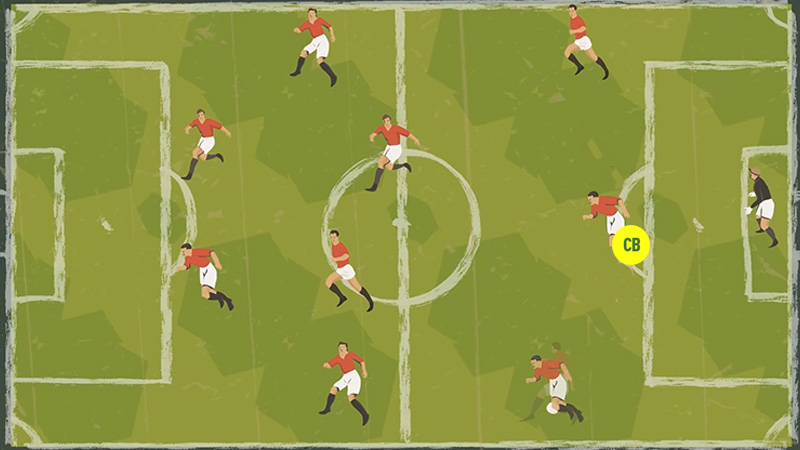
Center-backs are the defensive stalwarts in a soccer team, positioned centrally in the backline. They form the core of the defense, responsible for marking and thwarting opposing forwards’ advances. Center-backs must have an exceptional reading of the game, as they need to anticipate and intercept passes and crosses.
Their physical presence, aerial ability, and tackling skills are essential in one-on-one duels and set-piece situations. Center-backs are often strong leaders, communicating with their defensive partners and organizing the backline.
They play a crucial role in building attacks from the back by initiating passing moves and distributing the ball to midfielders. Moreover, their composure under pressure and ability to stay calm in critical moments are qualities that set them apart as indispensable players on the field.
Sweeper
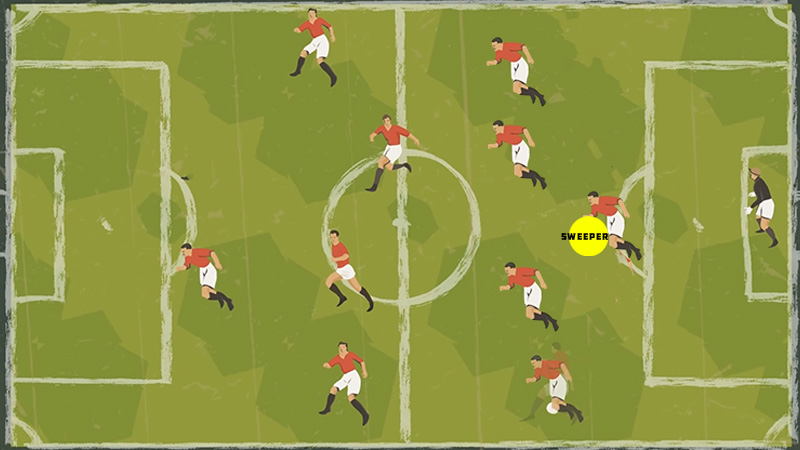
The sweeper is a vital defensive position in soccer, traditionally playing just behind the defensive line. Acting as the last line of defense, the sweeper’s primary role is to sweep up loose balls and neutralize attacking threats that penetrate the defensive line.
Possessing excellent anticipation and reading of the game, a sweeper serves as the team’s safety net. They often start offensive moves from the back, distributing the ball to build attacks. With strong tackling and heading abilities, they are adept at intercepting passes and clearing dangerous situations.
The sweeper’s ability to organize the defense and communicate effectively with teammates is crucial in maintaining a well-structured backline. Although the sweeper role has somewhat diminished in modern soccer due to tactical shifts, their impact on the game’s defensive aspect remains memorable throughout soccer’s history.
Defensive Midfielder (Holding Midfielder)
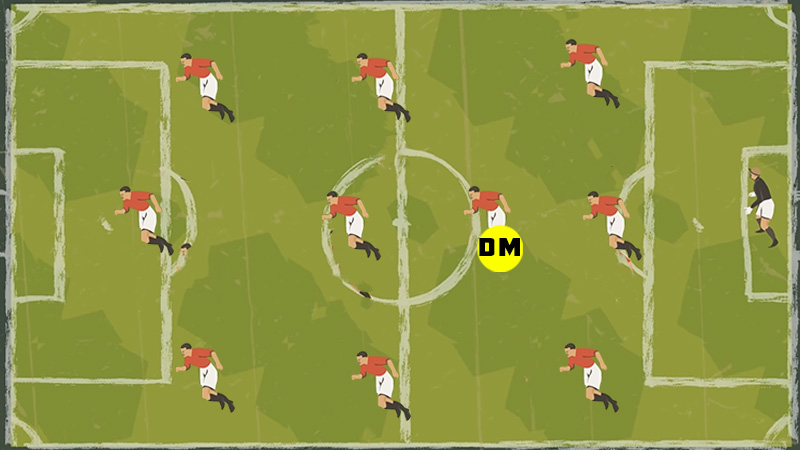
The defensive midfielder, also known as the holding midfielder, plays a pivotal role in both the defensive and offensive aspects of the game. Positioned just in front of the defense, this player’s primary function is to shield the backline by intercepting opposition attacks and breaking up their play.
Possessing strong tackling, ball-winning, and positional sense, the defensive midfielder disrupts the opponents’ rhythm and transitions the team from defense to attack. Additionally, they are skilled in recycling possession, distributing the ball calmly and efficiently to launch attacks from deeper positions.
Their ability to read the game, anticipate opponents’ movements, and provide cover for attacking full-backs makes them essential for maintaining balance in the team. Modern holding midfielders are also expected to initiate attacks with incisive passes and contribute defensively in high-pressing systems.
Central Midfielder (Box-to-Box Midfielder)
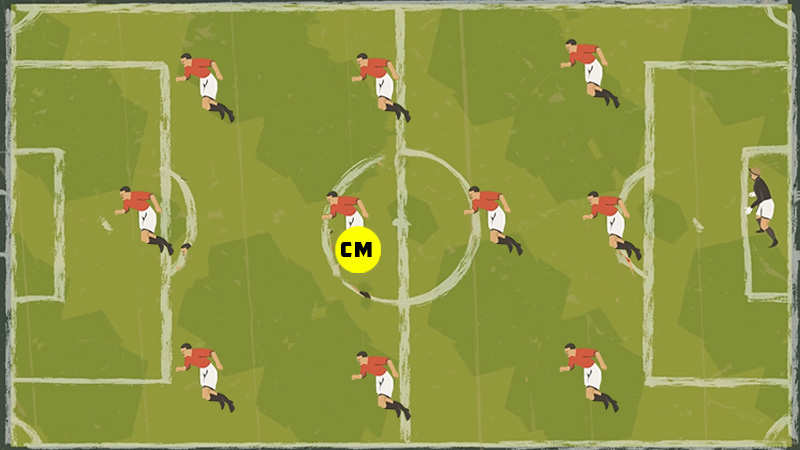
The central midfielder, often referred to as the box-to-box midfielder, is a versatile and dynamic player with responsibilities on both ends of the pitch. Positioned in the middle of the field, they act as the engine room of the team, connecting defense with attack.
On the defensive side, the box-to-box midfielder harries opponents, wins back possession, and provides defensive cover to teammates. In attack, they display excellent passing range and vision to distribute the ball effectively and create scoring opportunities.
This player’s stamina and work rate are crucial, as they constantly shuttle between defense and attack, supporting both phases of play. The box-to-box midfielder is often a goal-scoring threat, making late runs into the box and contributing with long-range shots. Their well-rounded skills and tireless presence make them a vital asset for any successful team.
Attacking Midfielder (Playmaker)
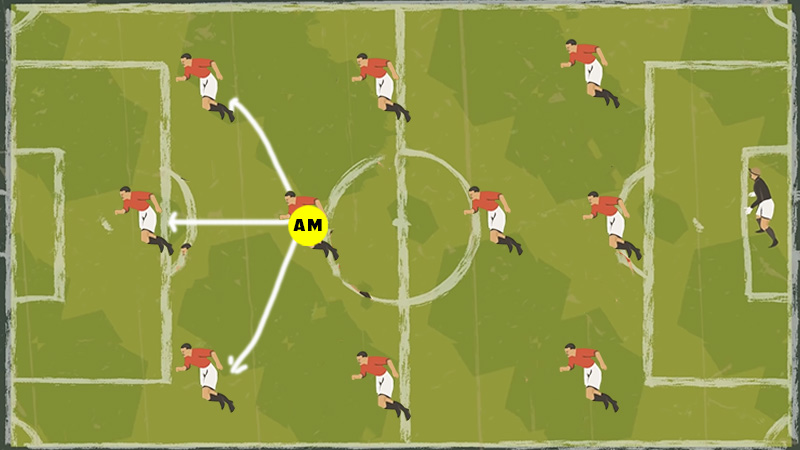
The attacking midfielder, often referred to as the playmaker, is a creative force at the heart of the team’s offensive maneuvers. Positioned just behind the forwards, they are responsible for orchestrating attacks, linking up play, and providing the final pass or shot on goal.
With exceptional vision, technical ability, and football intelligence, playmakers read the game to unlock stubborn defenses and create goal-scoring opportunities.
Their passing accuracy and ability to pick out key passes are unparalleled, enabling them to split defenses with precision. Besides their playmaking role, attacking midfielders are also skilled dribblers, capable of taking on opponents and creating space for themselves and teammates.
While not typically known for their defensive contributions, their offensive impact often compensates for their defensive limitations. Playmakers are often the creative heartbeat of a team, dictating the flow of the game and providing moments of brilliance that can turn the tide in their team’s favor.
Right Midfielder (or Right Winger)
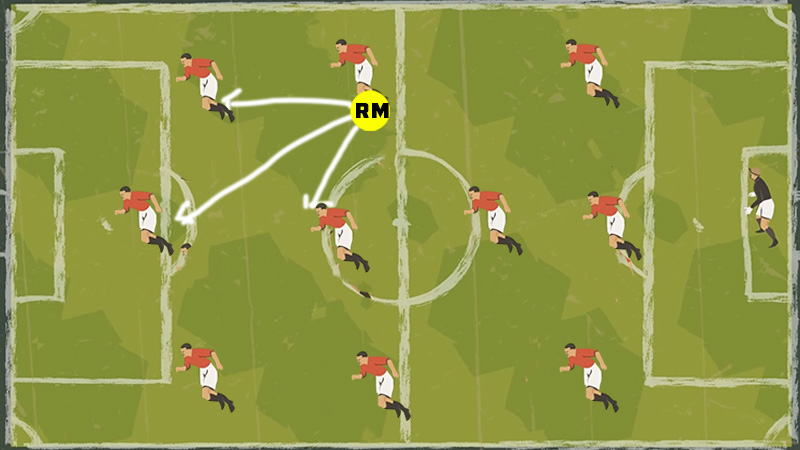
The Right Midfielder, also known as the Right Winger, is a crucial position in soccer. Positioned on the right side of the midfield, this player is known for their speed, agility, and dribbling skills. Their primary objective is to attack and create scoring opportunities.
They are tasked with delivering accurate crosses into the opponent’s box, allowing their teammates to capitalize on goal-scoring chances. The Right Midfielder’s versatility is essential, as they are expected to track back and support the defense when needed.
Their ability to cut inside onto their stronger foot can be lethal, as they can either take shots on goal or set up their teammates for scoring opportunities. Their defensive responsibilities include pressing the opponent’s left back and helping their own full-back in defensive transitions.
A successful Right Midfielder must have excellent vision, quick decision-making abilities, and be adept at taking on defenders in one-on-one situations. Their attacking prowess and defensive work rate make them a vital asset to any team.
Left Midfielder (or Left Winger)
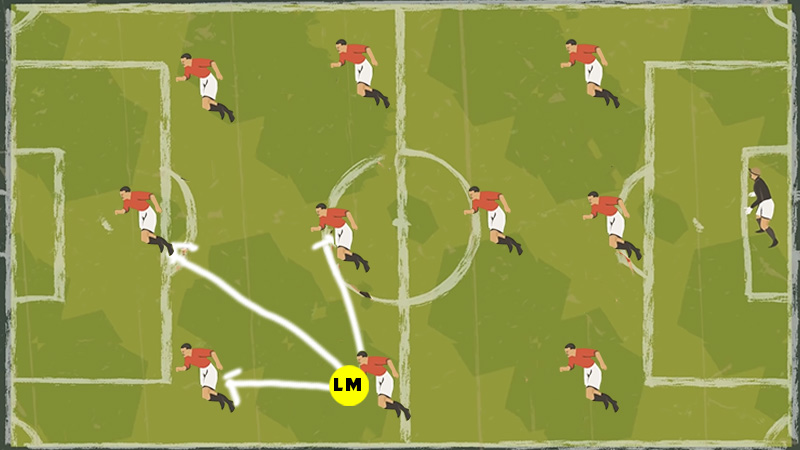
The Left Midfielder, also referred to as the Left Winger plays an equally crucial role in modern soccer. Positioned on the left side of the midfield, this player typically possesses outstanding ball control, dribbling skills, and a tendency to cut inside onto their stronger foot (usually right-footed players) for goal-scoring opportunities.
The Left Midfielder’s primary objective is to create goal-scoring chances by delivering precise crosses into the box and linking up with teammates during attacking maneuvers. They are often responsible for providing width on the left side of the field, stretching the opponent’s defense, and creating space for their teammates.
While attacking prowess is vital, the Left Midfielder also has defensive responsibilities. They must track back to support the left-back, help in regaining possession, and participate in defensive transitions.
A successful Left Midfielder requires a combination of technical skills, tactical intelligence, and physical fitness. Their ability to create opportunities and score goals from wide positions can significantly impact the outcome of a match.
Forward (or Striker)
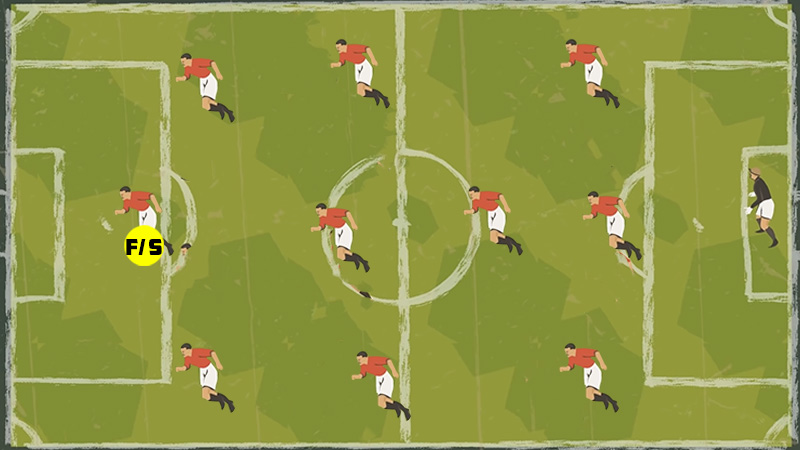
The Forward, commonly known as the Striker, is one of the most glamorous and crucial positions in soccer. Positioned at the forefront of the attacking line, the Striker’s primary objective is to score goals. They act as the team’s main offensive threat, constantly pressuring the opponent’s defense and exploiting any goal-scoring chances that come their way.
A successful Striker needs to be a goal poacher, showcasing exceptional finishing ability with both feet and their head. They must possess strong positional awareness, constantly seeking gaps in the defense to capitalize on scoring opportunities.
Besides goal-scoring, the Striker plays a vital role in defensive transitions, pressing the opponent’s defense to win back possession and initiate counter-attacks. Their impact on the game can be immense, making them the central figures of many successful soccer teams.
FAQs
What are the primary responsibilities of a Central Midfielder?
Central Midfielders are the engine room of the team, responsible for linking the defense and the attack. They control the game’s tempo, distribute passes to initiate attacks and provide defensive cover when needed. Their ability to read the game, maintain possession, and make incisive passes are crucial attributes.
How does a Center-back contribute to the team’s success?
Center-backs are the last line of defense, entrusted with thwarting the opponent’s attacks. Their primary role is to mark strikers, intercept passes and make crucial tackles. Additionally, their aerial prowess is vital during set pieces, both defensively and offensively.
What sets a Right Midfielder apart from other positions?
Right Midfielders, also known as Right Wingers, thrive on the right flank and are known for their speed and dribbling skills. Their primary objective is to attack, create goal-scoring opportunities, and deliver accurate crosses into the box. They are also expected to provide defensive support and aid their full-back in defensive transitions.
How does a Left Midfielder impact the game?
Left Midfielders, or Left Wingers, add flair to the game with their ball control and dribbling prowess. They typically cut inside onto their stronger foot and create goal-scoring chances. Providing width on the left side of the field, they stretch the defense and contribute defensively by supporting the left back.
What qualities make a successful Forward (Striker)?
Strikers are the focal point of a team’s attack, responsible for scoring goals and creating opportunities for their teammates. They must possess lethal finishing abilities, intelligent positioning, and adept link-up play. Beyond scoring, they contribute to defensive efforts, pressing the opposition and initiating counter-attacks.
Wrapping Up
Soccer player positions form the backbone of every team’s strategy, with each role serving a unique purpose on the field. From the visionary Central Midfielder orchestrating the play to the clinical Striker delivering match-winning goals, every player contributes to the dynamic and captivating nature of the beautiful game.
Understanding these positions allows fans to appreciate the tactical nuances and brilliance displayed during each match.
So, whether you’re cheering for your favorite team on the sidelines or analyzing the game from home, this comprehensive guide equips you with the knowledge to witness soccer’s magic unfold with a deeper sense of appreciation.
Thank you for staying with us.

